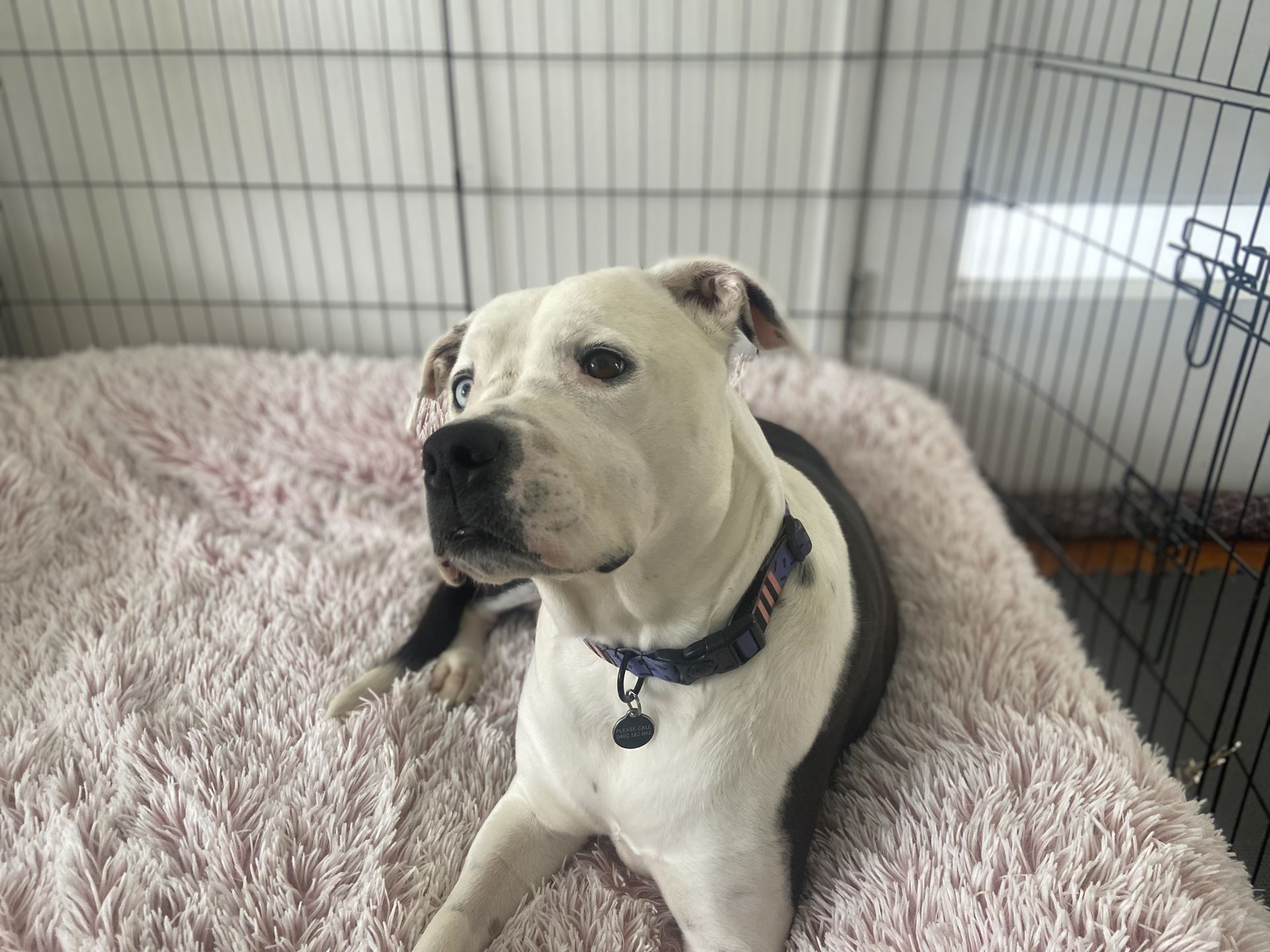- Home
- Pet Owners
- Dog Advice
- Understanding Dog Behaviour
- Behaviour Management
Behaviour Management
What is Management?Management is the key to limiting the rehearsal of unwanted behaviour. It's often the first step before teaching an alternative behaviour.Have you ever been advised by your trainer to put management in place to limit the rehearsal of a behaviour? Maybe your dog was jumping up to steal the roast turkey that was resting on the counter, or they got too excited when you put up your Christmas tree and started stealing the decorations to play with them. It could even be that they thought ripping up the Christmas presents under the Christmas tree was fun. (I mean, it sure was in your dog’s eyes!) No matter what your struggle is, good management is the first step in your success as a team. Limiting rehearsalWhile managing what your dog can and can’t do by implementing specific strategies seem like simply avoiding the behaviour, it teaches our dogs what we really prefer them to do through ‘limiting rehearsal’. To understand what ‘limiting rehearsal’ means and how crucial it is in behaviour change, let’s look at how dogs learn and choose behaviours. It all comes down to what we call "rehearsal" of a specific behaviour. When our dogs successfully rehearse a behaviour – such as jumping on the counter and stealing food or grabbing the decoration off the Christmas tree and running around with it – this chain of events becomes self-reinforcing. Imagine there is a tunnel for each behaviour your dog chooses. It can be a tunnel that leads to a desirable behaviour, or it can be a tunnel that leads to an unwanted behaviour. The more they choose the same tunnel, the more this behaviour is reinforced. Reinforced tunnels are more likely to be chosen the next time. What we want to do is to make the tunnels that lead to desirable behaviours more appealing to our dogs by adding fun and rewards, so they choose the tunnel we want. Let’s explain this with an example: Counter Surfing for the Christmas Turkey. Your dog jumps on the counter and reaches the turkey left there. Their choice to jump on the counter is rewarded with the turkey, so your dog will likely repeat the behaviour if this scenario happens again. The reward doesn’t even have to be food or an object; it could simply be attention of someone specific, or something that makes your dog feel innately good, like grabbing that bauble off the Christmas tree and running away with it while being chased by you. Now let’s talk about how management can help us with all this. Let’s start with a dog who is quite curious about Christmas tree, or just loves the game of "catch me if you can" every time he steals that bauble off the tree. Management options for this example could look like this:
All of these suggestions limit the rehearsal of the behaviour. When your dog isn’t able to practice a behaviour like stealing a bauble from the Christmas tree because they don't have access to it, they won’t receive the reward. Hence, they are less likely to repeat the behaviour. Rewarding alternative behavioursThe next step after implementing a management plan is to start teaching your dog alternative behaviours. Remember, the tunnel that is reinforced becomes more likely to be chosen in the future, so the alternative tunnels we make available and attractive will lead to behavioural change over time.
For each management plan in the above examples, we could also teach the alternative behaviour as below: TEACHING ALTERNATIVE BEHAVIOUR FOR PLANS 1 AND 2: Throw a piece of low value food towards the Christmas tree so your dog goes and eats it. Wait for them to orient back towards you, and when they do, say YES (mark the behaviour) and rapidly give higher value treats to your dog. The tunnel that is being reinforced in this example is “walking away from the Christmas tree”. This approach could be applied to the baby gate management plan as well. TEACHING ALTERNATIVE BEHAVIOUR FOR PLAN NO 3: With this management plan, the main focus should be on teaching your dog that the playpen area is a calm and rewarding place to be. Never use a playpen or a crate as a punishment or when your dog’s practicing the unwanted behaviour. The playpen or resting area should be the place that your dog chooses to go to because it’s the most rewarding place to be. Mark and reward every time they choose to go in their resting area, lie down, or show any type of calm behaviour. You can also teach calmness by providing mentally stimulating activities in the resting area, such as giving your dog a LickiMat, a filled Kong, a snufflemat or a long-lasting chew. It could even be some of their daily allowance of food hidden inside an empty toilet paper roll. TEACHING ALTERNATIVE BEHAVIOUR FOR PLAN NO 4: In this example, we can start teaching a "place" cue. If our dogs are relaxed and having a nap on their bed, they cannot also be going for the Christmas tree, and there will be no need for them to be on a leash anymore. Managing for safetySome management steps should always be left in place to provide a layer of safety and security for our dogs, such as separating dogs in a multi-dog household during mealtimes. By doing this, we are teaching our dogs that they can eat in peace without ever worrying about being interrupted by other dogs. By implementing a management plan, we are setting our dogs up for success and are making sure that the choices they make lead them to successful and desired outcome. What management plans have you implemented in your home to limit the rehearsal of a behaviour? Article written by Zara Dezfuli, Witty Woofs Dog Training and Behaviour. Copy editing by Hannah Tricker, MPubComm. |

